|
The Library of Lost Things is out in the world! It’s a gorgeously written YA coming-of-age debut by Las Musas’ Cuban-American author Laura Taylor Namey.
“One reader said that it’s a story ‘about love.’ I think that’s the best description,” Taylor Namey said. The novel follows the life of high school senior and bibliophile Darcy Wells, who has spent most of her life hiding in other people’s stories. Books are her way of coping with her mother’s hoarding disorder. Darcy finds refuge in her best friend Marisol Robles’ family. Marisol’s big, loving Cuban-Mexican family take in Darcy as one of their own. While Darcy is struggling to survive her mother’s mental illness, Asher Fleet, a former teen pilot with a shattered future, walks into the bookstore where she works and straight into her heart. “The idea of Darcy came because I’ve always been a little like she is. I’ve used books as a stress reliever,” said Taylor Namey from her home in San Diego. “When my own happy endings weren’t so happy, I would live vicariously through the characters in the books I was reading.” “For the premise of the book, I thought about someone who wasn’t just escaping in books, but hiding in them. What would that look like?”
1 Comment
It's an honor to introduce to Las Musas blog readers the gifted Natasha Díaz, freelance writer, producer, and screenwriter. Natasha has been a quarterfinalist in the Austin Film Festival and a finalist for both the NALIP Diverse Women in Media Fellowship and the Sundance Episodic Story Lab. Her personal essays have been published in the Establishment and the Huffington Post. On August 22nd, Delacorte Press releases her debut young adult novel COLOR ME IN! COLOR ME IN is a brave, poetic, engrossing coming-of-age and coming-to-wokeness story of 16-year-old Nevaeh Levitz who grew up in an affluent suburb in NYC disconnected to her biracial roots and unaware of her privilege. When her Black mom and Jewish dad split up, she relocates to her mom's family home in Harlem and is forced to confront her identity for the first time.
You Tweeted once that COLOR ME IN is your love letter to NYC. Can you discuss how your love of NY infuses the book?
Aside from being multiracial, Jewish, and a woman, being born and raised in New York City is the next most defining thing about me. I’m sure many people feel this way about the place(s) they grew up, but being a New Yorker is something I take serious pride in. Being raised here gave me a lot of independence at an early age, as well as a no-nonsense, tough exterior. I learned real quick how to watch out for myself and move through the world with confidence, or at least, enough feigned confidence that people believed me enough not to mess with me too much. A lot of the transitions Nevaeh goes through in the book are about coming into herself and finding her voice, so I tried to put her in the middle of very New York moments and experiences to help aid in that growth. COLOR ME IN is not a memoir but the emotional depth of the novel feels very personal - how much did you draw from your own history and where did you draw the line? The book is mostly fiction, but I did pull a handful of my own experiences that I included in Nevaeh’s story and I was also inspired by people in my own life as I crafted some of the characters. In the beginning, it was hard to allow myself to stray from what I had gone through because I was worried it would mean the book was not authentic, but in truth, I needed to separate what I had lived through and what makes a good and engaging story. I did my best to explain in my authors note what was real life and what was fiction to give a reader a sense of my own experience. We have so much information. We have voices on the TV and hot takes on social media. We have photographs that pierce our hearts and haunt our dreams. We have oceans of ink spent on getting the details, the facts – and sometimes the lies – just right. As Dr. Rudine Sims Bishop said, we need mirrors and windows to understand people who are like us (or like our parents or grandparents) and people who are not like us. We need something greater than information. We need story. In my debut YA novel, The Grief Keeper, Marisol Morales crosses borders, sacrifices her physical and mental well-being and endures racism, for the chance of safety for her sister, Gabi, and herself. I can easily understand why someone would risk so much, but I am a daughter of immigrants. The idea of having to flee your homeland, whether because of violence or because of a lack of opportunities does not seem farfetched to me at all. But I know that for some people, it can seem foolish, or downright selfish. My intention in writing The Grief Keeper was to engender understanding and deep empathy—of ourselves and of others who are not like us. Here are 8 books for children that I think do the same.
When I was a teenager, there were two things I longed for most: my own room, and to somehow change my roots from Mexican to Italian. I got my wish for the former in my university dorms at the age of twenty-two; the latter, not unexpectedly, was impossible to achieve. Still, I tried.
I’d long been obsessed with Italian food, spending my free time trying to master dishes, especially lasagna. When my friends went on a trip to Rome, I thought I would die from jealousy. I practically crawled into their laps when they returned, sighing with longing at their descriptions of ancient stone ruins, endless glasses of blood-red wine, and the cutest boys they’d ever seen, each one flirtier than the last. I knew I was meant to be Italian, somehow. I was mixed up from birth, or had a secret parent, or maybe a variety of past lives to account for my connection. I imagined myself a peasant, gathering sun-warmed grapes on a vineyard, or a baker, crossing each loaf of bread for protection before it entered the fire. When Eat Pray Loveby Elizabeth Gilbert was published, I was almost twenty, and I read about Gilbert’s travels in Italy over and over again. I hosted dinner parties centered around pasta, I brought home books on Italian cooking, on the language, on the history. It's clear to me now, that although Italy has a rich and gorgeous history and culture, my attraction, my longing for my identity to be a part of it in some way was centered in the idea that who I was—Mexican American—just wasn’t enough. All my life, I’d heard ‘Mexican’ as synonymous with an insult. People made jokes on our height, our food, the volume of our voices, the ways we celebrate, the ways we mourn. My mother told us stories of her childhood: being called spic by white men while walking on the street. How my grandparents, who were migrants, were forced to used separate facilities in their travels. How they encountered signs that proclaimed,No Mexicans allowed. I remember, as a teenager, pronouncing empanada at a Mexican restaurant, and my friend’s white father becoming intrigued. “Say it again,” he told me. “Again.” As though I were a circus animal, saying things correctly for his entertainment. I remember one of my sister’s white friends, making faces over my mother’s enchiladas, cheesy and bubbling from the skillet. She took one bite and ran to the trash to spit it out. I remember my grandmother and her internalized racism, refusing to call any white man or woman by their first names, even at their insistence. In conversation with fellow Musa, Sara FaringIt’s my pleasure today to introduce Las Musas blog readers to Alex Villasante, the brilliant author of one of my favorite YA novels of 2019—The Grief Keeper. The Grief Keeper is the tender, moving, and compulsively readable speculative tale of seventeen-year-old Marisol, a young Salvadoran who flees her country with her little sister after their brother is murdered. Marisol is offered a chance at asylum in the U.S. if she agrees to participate in a dangerous experimental trial: she must take another’s grief into her body. A Junior Library Guild selection, an Indies Introduce pick, and a Barnes & Noble debut of the week, THE GRIEF KEEPER has been called an “engrossing debut” by Publishers Weekly and a story that “will grip readers and provoke empathy” by Kirkus Reviews. Alex, thank you for speaking with me. Without further ado... What was the very first seed of THE GRIEF KEEPER? Was it a question you needed answered, an image that wouldn't leave you, a character whispering in your head, or something else entirely?
The idea for THE GRIEF KEEPER came from two trains of thought I’d been mulling over – my parent’s immigration story, their experiences and sacrifices; and an article about a wearable device being tested that might alleviate the symptoms of PTSD in soldiers returning from war. These thoughts knocked around my head until they collided with a ‘What if?’ What if there was a way to take grief from one person and give it to another? Which begged another question: Who would be the giver and who would be the receiver? I followed this string of questions until I had Marisol firmly in my head. Then I followed Marisol to the rest of her story. What fell out of the overstuffed closet in your brain (we all have one) that you knew you needed to include in this story? Did you come across any fascinating details while working on the book that you ultimately chose to exclude? Oh, my overstuffed brain! I’m always adding details and characters and scenes that tumble out of my head in the first draft. Most of those superfluous ideas, I manage to weed out (back into that brain-space you go! Eight ghost brothers bent on revenge maybe needed for another book!) but there was another pair of siblings in this book – an adult brother and sister working through their own, very different, reasons for grief. My editor wisely saw that this pair did not add anything to the narrative, and worse, took tension away. OFF they went! The sisters in this book shine so bright from the very first pages. What did you want to highlight in Marisol and Gabi's sisterly dynamic? Siblings is a theme I come to again and again in my writing. There isn’t another person who will be closer to you in your life. Even if you hate your brother or sister – that bond of emotion is close and complicated. As I discovered who Marisol was, I wrote Gabi and their older brother Pablo, defining each sibling as they were in relation to each other. That’s how siblings grow, in shadows of others, in protection or competition, hatred or love or both. I wanted Marisol and Gabi’s relationship to be a centerpiece of the book because that is what motivates Marisol in the hard choices she makes. What books, movies, and television shows do you like to think THE GRIEF KEEPER is in conversation with? THE GRIEF KEEPER is an immigrant story, in the way YOU BRING THE DISTANT NEAR and AMERICAN STREET are immigrant stories – though these are very different. Exploring what it means to be other, what it means to feel apart, is at the core of my book. Also, as you and I have discussed, I’d say that NEVER LET ME GO by Kazuo Ishigurois a book I think about a lot in context with THE GRIEF KEEPER. (I love that book, it haunts me still. I am not putting my book on a par with that masterpiece, let’s be clear!) Like NEVER LET ME GO, THE GRIEF KEEPER explores what it means to be human, how we disregard humanity to the point of dehumanization for the sake of progress. It also questions who gets to benefit from technology and who suffers. In the book, you beautifully and sensitively explore the way that this process of passing grief from one individual to another could be used to help the privileged and hurt the needy. As a reader, it's impossible not to empathize with GK's protagonist, Marisol, a young Salvadoran who seeks asylum in the US and is given a chance at that for herself and her sister if she agrees to participate in this very risky experiment. Detailing how this experiment affects the lives of teenagers is a visceral, intimate way of examining inequity in the world. What parallels did you hope to draw between Marisol's world and ours? I see Marisol’s world and ours as essentially the same. The only difference is the technology. The forces that seek to make us despise otherness are here right now. The moral ambiguity that comes with having power, money and privilege is here too. Even the drive to protect the ones we love at any cost is here. We’re living in Marisol’s world. THE GRIEF KEEPER takes existing situations and turns them up a notch. Five friends cursed. Five deadly fates. Five nights of retribución. This week Ann Dávila Cardinal stops by the Musas blog to talk about her debut novel FIVE MIDNIGHTS! FIVE MIDNIGHTS is a YA horror novel set in modern day Puerto Rico which uses the myth of El Cuco to examine topics such as identity, loss of faith, and substance abuse. But first a little more about the book... If Lupe Dávila and Javier Utierre can survive each other’s company, together they can solve a series of grisly murders sweeping through Puerto Rico. But the clues lead them out of the real world and into the realm of myths and legends. And if they want to catch the killer, they'll have to step into the shadows to see what's lurking there—murderer, or monster? OK, Querida! Let's get started!!! 1. What was the first image or visual that sunk its teeth in and wouldn't let go? I love this question! Honestly, it was the amorphous image of El Cuco. I know, that sounds contradictory to the question, right? But when I first found out about him, that he was present in many different Hispanic cultures under different names, I kept asking people, "but what does he look like?" Most people just shrugged, some had their own images. But the idea of him not having a set shape was SO intriguing to me. Because ever since I was little, my imagination was always WAY scarier than reality, so I imagined him like the English boggart, taking the form of the thing you feared most. I loved that they found Naomi Romero's illustration of him for the cover because I think she really captured the visual that was in my head. 2. Speaking of monsters. Some people in the genre believe that the monster must never be visible - or at least not fully - in order to keep the tension up. Are you of this camp and how did you wrestle with keeping your monster amorphous being while keeping the dread a very tangible thing? I actually had a lengthy discussion about this with my brother George. There was a scene where El Cuco took the form of a huge snake, and I got very detailed about it, describing the muscled body, the triangular head. George felt that level of description took away from the tension for the reason you mentioned. Since he's a psychoanalyst and understands much more of the human mind than I do (and has a dozen years of horror reading on me) I took his advice and went less specific in the end, more of a formless evil but with snake-like qualities...the sound of scales scraping, slitted yellow eyes, that sort of thing. He was right: it upped the tension. So I guess my answer is that I'm coming over into the less visible camp...slithering over, you might say. 3. I feel a bit of my chef side coming out with this next question. As I was reading I kept getting hints of classic tales and authors like dash of flavor coming out. I'd read a page and think, "oh here's a hint of King here," in the best way. What are some of your influences as you were writing this? Oh, influences as I was writing it? I mean, I think at this point in my life I've had so many years of gathering influences that their voices are all in there, you know? I mean, what horror writer isn't influenced by Stephen King? Whether they admit it or not. I was a huge fan in my youth. And Anne Rice, Interview With a Vampire came out when I was 13. Gorgeous Gothic literature (don't even mention the movie to me. Sheesh! Tom Cruise as Lestat?). But mostly when it came to horror it was movies that influenced me the most. I was lucky to be around for what I feel is the absolute heyday of horror cinema. And a childhood friend of mine, Maitland McDonagh, is a horror film critic, so she brought me to more films than I can count. Some great, some awful. I would answer the phone and find myself talking to Robert Englund (Freddy Krueger) or Michael Rooker (Merle in The Walking Dead) who were calling for their interview (both have really sexy phone voices, BTW). Fifty-six years of these story-lines, literary and cinematic, wound their way into my psyche, so I'm not surprised they're visible in my work...or that I have spent years in therapy. 4. ...you talked to Robert Englund!?!?! WHAT?!?! We need to sit down and just walk through everything and also help me get new glasses. So, as someone who also juggled multiple storylines - how did you keep personalities separate? How were dynamics particularly important for the story? Oh, it was just a hello and a "Hi, can I speak to Maitland McDonagh?" type thing, but it was enough for me to fangirl out! But Michael Rooker called me "Darlin'." Sigh. Keeping the personalities separate wasn't the hard part for me, it was during the revision process, my agent or editor would say, "Lupe needs some more substance" then I would beef up Lupe, and then Javier would seem one-dimensional. It's kind of like when you fix up one room of your home, the others suddenly seem shabby. I eventually hit on the right balance, though. But it is a balance. And the dynamics between the two were so important because to me they represented the two cultures that I was stretched between as a kid. I think that's something that a lot of teenagers can relate to these days. They sometimes fight, but mostly compliment each other. 5. Speaking about culture. I notice that Lupe shares your last name (Dávila) and the moniker of Gringa-Rican in the book. Can you talk a bit about if and how you spoke to that feeling of being between two places and what it meant for Lupe to carry your last name? It’s so interesting. It wasn’t until you sent this question that I realized Lupe had that name before I did! I was born Ann Marie Hagman. My dad was a Swedish/Irish/English 6’2” gringo. I was named after my great aunt, Ana Maria Dávila. We were born on the same date. But my father thought Ana Maria was too “ethnic.” I’m still disappointed my mother caved. When I got married, I took my husband’s Native American name, Cardinal, and used Hagman as my middle name. After my mother died I held tight to the Dávila side of me, a way of keeping her around. When I started writing this book six years ago, I gave the character my maternal family name as an homage. Then I realized I’d worn the Hagman name for 55 years and I felt more Dávila. So I changed my middle name to Dávila. In traditional Spanish families we would keep all these names anyway. When I called my Tío Esteban to tell him I was legally a Dávila now, he said, “you always were, Sobrina.” 6. Puerto Rico - of course - plays a big role in Five Midnights. It is also squarely in the present delving into a lot of the social, economic and emotional status of the island. Can you talk a little bit about your approach, any hesitations you may have had or how setting can often become another character?
Oh, so many hesitations. I've never lived on the island for more than a few months. I know that when you hit that one thing, that "Wait! no one uses that expression in Puerto Rico! That's more a Mexican expression!" you lose readers. They no longer trust you. So I worked hard on that and had many many other eyes on it, people who live and work on the island year-round. And when setting a book on Puerto Rico, how does it not become a character? Good Lord, the pull from that land is extraordinary. It's a drug that gets in your veins and you think about all year long (particularly during the long hard winters!). And it would be irresponsible to not address the more difficult situation the island is in these days. Even pre-Maria it was a tough time. I saw it start in the 70s and 80s when my mother's town started to change. It was farmland, bucolic, then drugs came in and I learned the term tiroteo when I was a small child. It was hard to watch because I wasn't seeing it every day, when I came back I would be shocked at the changes, and my aunt would be surprised, because she was like that frog in the proverbial boiling water, it happened slowly so she didn't notice it encroaching on her private jungle. Initially when I wrote about Puerto Rico I portrayed it as idyllic, heaven, the way it is in my heart. But that's not fair either. That's exoticizing it. I love it with all its brightness and dark corners. I love it with all my heart. 7. You deal with a lot in this book, from colonialism, substance abuse, faith and loss of faith, culture clashes and family. Did it feel like too much at times? Why was it necessary? I promise after this I'm going with fun questions!! Oh boy! You are asking the tough ones! But that is fitting given the content of the question. I mean, yes, it’s a lot. Some of that was intentional, and some just came organically when telling the story, like loss of faith. That just happened naturally while telling Javier’s story. I think loss of faith is often a prerequisite for addiction. Not always, but often. And substance abuse was just part of my daily life as a child. I had to hide the car keys sometimes, and clean the house and do the laundry. When you’re young and you can’t rely on the adults in your life you don’t have a lot of time to feel sorry for yourself, you just do it. I hope i can reach a reader growing up in a similar situation and give them some kind of hope. You asked if all these things were necessary. I don’t know about that, but I think all those things are there because they’re part of my own story. And no matter how hard I try to write away from that, it always bleeds through one way or another. 8. Let's switch this up a bit and do some fun ones! How about what are some of your favorite horror texts or movies and why? Favorite horror...that's a tough one. In terms of books, loved The Ruins by Scott Smith. Great book, the movie...not so much. Cabin at the End of the World by Paul Tremblay. Very different kind of horror, more sociological based. I actually had coffee with him at BookCon this past weekend and grilled him as to what he thought was actually going on in that novel and he wouldn't answer. In terms of young adult literature, anything Daniel Jose Older writes makes me happy, and Zoraida Cordova's Brooklyn Brujas series is FIRE. Love her work. But my favorite young adult horror of all time was The Forest of Hands and Feet by Carrie Ryan. It's ten years old and is still the most gorgeous writing in the genre. Movies...I loved Bird Box based on the novel by Josh Malerman. And A Quiet Place. Both made me think, a lot. Which is always something I like. And Get Out which was ground breaking in SO many ways. Of course I love the classics, anything by David Cronenberg or Guillermo del Toro. And as far as television, I'm a zombie enthusiast, but my love of Walking Dead is waning, I"m sorry to say. Though it will always have a special place in my heart and the first season is BRILLIANT. And I'm really in to the Danish series The Rain. Very interesting. 9. LAST QUESTION!!! If you could write from the POV of any monster - tell their story, get in their head - who would it be and why? I would be Chupacabra, but since I LOVE goats, I would be goat KISSER rather than a sucker. Besocabra? Snort! Lol. Buy a copy of Five Midnights wherever books are sold or borrow it from your local library! Don’t Date Rosa Santos is an incredible debut from author, Nina Moreno about a Cuban-American young woman, Rosa lives with her Abuela in Port Coral, a small coastal town in Florida, where you can’t turn your head before one of the gossiping viejitos spreads the word. Rosa is your regular teen, well, except for the fact that she (along with the other women in her family) has been cursed by the sea and can’t fall in love with a man with a boat for fear he will meet his untimely demise. But other than that, Rosa’s just enjoying her senior year of high school, trying her best to learn about/own her Cuban heritage despite the fact that her Abuela refuses to talk about their history, trying to decide where to go to college, and hanging with her bestie, Ana-Maria, at her parent’s bodega, El Mercado, which serves the best Cuban sandwiches, croquetas, and Cuban coffee around. Things are going just as they should until Rosa’s mom comes back into town after being gone for months and she is not the only unexpected visitor in Port Coral. Alex Aquino, a sexy guy with tattoos, a mysterious disposition, and a boat that catches Rosa’s attention from the docks. Rosa tries her hardest to stay away from the sea, but it calls to her, and eventually, she has to respond, which leads to an adventure you don’t want to miss filled with gorgeous, lyrical prose, romance, a quest for self-discovery, and an ensemble cast of characters who jump off the page and right into your heart. So, what better way to get acquainted with the book than to chat with the cast themselves? Without further ado, let’s dig in! Abuela, let’s start with you, why did you choose to settle in Port Coral after leaving Cuba? What do you love about it? What do you miss most about Cuba? Pero, this is about Cuba? Nadie me dijo eso. The sea brought me here and this is where I stayed. Next question. Can you talk to us about the spells/potions people request most often? Are there any you refuse to make? Everyone wants better luck or easier memories, because they have pain and tired bones and don’t eat real food. Why is everything sandwiches now? So they come to me when they really need good food from home. But when they need more? I can do that too. Lilliana, you grew up in Port Coral same as Rosa what drew you to painting? If you were to turn Port Coral into a mural, what would you paint? Graffiti? Don’t look at me like that, Mami. I love painting because I love that it means making a mess while creating something beautiful at the same time. And Port Coral is basically already a mural, this place is almost too pretty. Rosa, how would you describe Abuela and your mom’s parenting styles? *laughs* Oh, wait, you’re serious? They’re night and day. And also more similar them either of them would like to admit. *ignores both of their looks* Follow up question, Rosa, what’s the best bit of magic you’ve picked up from the Santos women? To always be mindful of my intentions. That one can apply to a lot of things, but is especially important with magic. Also grow mint and rosemary, eat your grapes at midnight on new years, and only light candles in odd numbers. Ana-Maria, what do you think you’ll do to keep yourself occupied if she goes to college outside of Port Coral? Hey, I’ll be busy too. I’ve got my drums and plans and am applying to the community college...wait. My parents aren’t going to read this, right? Ok, I’m starving, can we talk for a moment about El Mercado? Ana-Maria, what’s the best kept secret on the menu?
A croqueta sandwich. Don’t tell my dad I told you if you order it though. He’s not an off-menu kind of guy. Rosa, Abuela, Lilliana, what are YOUR favorite El Mercado treats? Rosa: the new pastelitos! They’re so flaky and sweet. I don’t know who’s baking them though. Liliana: Chicharrones drenched in salt and lime. Mimi: The lechon asado is very good. Rosa, let’s keep it real, what was your first thought when you saw Alex? Rosa: Oh, the new guy? I thought, “cool tattoos.” Ana: Because you could only see his arms. You should have seen her face when he turned around. Rosa: Um, well, yes. He has a very good face. Alex, can you give us an in-depth description of your tattoo sleeve with some meaning behind the images? It’s the blue waves of the sea. I’m happiest out in the water, and I like to be reminded of it when I look at my own skin. Alright well, it’s been great to get to know all of you a bit more, one final question, if you can go around the table and answer: What does the sea mean to you? Mimi: (Doesn’t answer but her gaze goes out the window.) Liliana: An old dream. Rosa: A mystery. Ana: Beach day. Alex: Home. <3 Buy a copy of Don't Date Rosa Santos wherever books are sold or borrow it from your local library! Las Musas are thrilled to host the exclusive first look at the cover of THE TRUTH IS, the second book by our very own musa, the acclaimed writer of THE DISTURBED GIRL'S DICTIONARY, NONIEQA RAMOS. It hits shelves September 3, 2019 by Lerner/Carolrhoda Lab. Check out the synopsis below, and keep scrolling to read an excerpt from the novel! Cover Design by: Lindsey Owens • GIF Design by: Jose Padron Fifteen-year-old Verdad doesn't think she has time for love. She's still struggling to process the recent death of her best friend, Blanca; dealing with the high expectations of her hardworking Puerto Rican mother and the absence of her remarried father; and keeping everyone at a distance. But when she meets Danny, a new guy at school--who happens to be trans--all bets are off. Verdad suddenly has to deal with her mother's disapproval of her relationship with Danny as well as her own prejudices and questions about her identity, and Danny himself, who is comfortable in his skin but keeping plenty of other secrets.
Read the dynamite first chapter of THE TRUTH IS:The Book of Love is blaring on my alarm radio app and I know to turn that shit off before my moms hears it. Once upon a time in a land ten years from divorce court, my parents danced to it at their wedding. They had met during study hall when they realized they were the only ones studying, and the rest is history. Now it’s all math: who owes what to whom, an endless game of long division. I’m still playing the song though, because I don’t get it. Because seriously, who wrote the Book of Love? Who gets to decide whom, and why, and when? I’m fifteen and I’m supposed to fall in love like any minute now. It’s biology. My moms is a nurse, so she knows this better than anyone. I don’t know what scares me more, falling in love with someone or my mother finding out. The way I see it, love is just like your period. One day you’re bleeding out of nowhere and it hurts, and that mess goes on for mostly the rest of your life. My best friend, Blanca, didn’t see it that way though. Blanca had been waiting to fall in love her whole life. If you can call fourteen years of living “whole.” She always thought we’d get married at the same time in Central Park. Honeymoon together in San Juan. My moms flicks the lights that are already on. “¡Despierta, levántate y brilla! Thank God for a new day. Wakey-wakey,” she sings, opening and shutting my bedroom door fast. I hurl my chancla at the door. Mornings to me are like holy water to the devil. Standing up, I trip over the baseball bat that my mother has always insisted I keep by my bed. What can a bat do against a bullet? A holographic Jesus screensaver watches over me from across the room. I gasp. “Ma! What the hell?” “You toss and turn so much,” my moms shouts from the kitchen, where the rich aroma of coffee calls my name. “He’s protecting you from bad dreams.” I scowl. Hurl my sheet over the computer, making Jesus a ghost. Fling open the door. “So let me get this straight. Like the white dude in the dress with the giant thorny bleeding heart glowing out of his skin is going to get rid of my bad dreams?” I know Mami is signing the cross: “Forgive her smart-ass mouth, Lord. She gets it from her father.” Anything that’s right with me comes from my mother’s side, anything wrong from my dad’s. I lock myself in my bathroom and shed my favorite vintage West Side Story T-shirt that I will wear until it disintegrates. Ah—cough, gag—she’s been burning incense again. Patchouli. To protect me from bad spirits. With all this protection, I’ll be lucky if I don’t die of asphyxiation before I leave the house. Modern Christian music blares on the kitchen radio. Dudes are full of uber emotion singing about Jesus. I wish I could feel all pumped up like that about religion. But like how long has it been since Jesus has been here? Two thousand years. I remember waiting for my dad on the porch for hours when he didn’t show up for a visit. Two thousand years is a long time to wait on a porch. Yeah, I’m bitter a little bit. When the water is steaming hot, I step into the shower stall full of lotions and creams Mami stocks in here so I will smell like the botanical gardens. Because all girls are supposed to want to smell like flowers. Be a flower. It’s true I got stems. Like my moms, I got the mile-long legs. She had to wear flats around my dad so she didn’t tower over him. But just like stems, I’m hairy. I don’t like sharp, stabby, prickly legs. Blanca’s legs always felt like a cheese grater if it got cold. Mami keeps threatening to wax me, por que we girls can take natural too far, she says. I lather up with my loofah, covering up the scar above my knee with bubbles. I rub and rub, imagining the scar—the hole torn in my leg and my life—has disappeared. I step out of the shower into the mist. I love looking in the mirror and seeing me in the clouds, immaterial. They don’t got homework in the clouds, do they? I picture my moms and me sitting on clouds after we both die. “Pero, like, if you take one more class, you could be an archangel.” Once my hair—which Blanca used to call The Entity, like she was one to talk—is braided to my satisfaction, I head to the kitchen, where my moms is waiting for me with cafe con leche. She likes to have a convo with me before she’s off to work. She always sits straight, rigid, like a beautiful statue that survived the volcano but got left alone in the ruins. “Morning.” “Good morning, Verdad.” I pull out my chair—across from Mami’s and next to the place that’s been set for Abuelo for the past three years—and collapse in it. “Couldn’t God put morning later in the day?” I prop my head on my right hand and stir my coffee with my left. “Did you get any sleep, mija?” “Couple of hours. Did you get any sleep?” “Verdad! This isn’t healthy for a young girl. You’re not going to grow properly. You’re going to get acne.” This from the woman who hasn’t slept since 2000, who works at three different hospitals and builds Habitat for Humanity houses in her so-called spare time. “Mom, this isn’t healthy for a grown-ass woman. You’re going to start shrinking. You’re going to get wrinkles.” My moms stirs her coffee into a whirlpool that would suck in the Titanic. “Verdad! Listen.” She grabs my hand and holds me prisoner with her eyes. “A lot has happened. That we can’t control. But what we can control is ourselves.” That’s bullshit. I break free from her gaze and look away. There are certain things you want to be true. My moms wants it to be true that if you work your ass off, you’re gonna have this great life. You’ll have the house, the car, the vacations. I mean, I know I have it good. Mami is a nurse, but everyone in the family calls her doc and hits her up for advice when they so much as have a sniffle. She bought us a house and made sure I had my own room and bathroom. We’re the ones the family descends on for barbecues because we’re the only ones with a yard. We got a car that runs most of the time. We got a YMCA membership. But like what’s the point of a house if you’re never in it? A bed if you never freakin sleep in it? My moms works 24/7 to keep us in the house we’re in. The only place the damn car takes her is to work. Mami sighs. She squeezes my hand and releases me. “You know you need to play a sport . . .” I lift my eyebrows. This is like telling an ostrich he should dance the tango. “No no no!” she clarifies, images of me attempting volleyball flashing across her eyes. “I mean you should . . . run. With those long legs. You know, your dad used to run—” “Used to?” He left us for another life. Got himself a new house, a new wife, a stepdaughter. But most of the time it feels like he’s still fleeing the scene of his earlier crimes. My dad’s present does not have room for his past. I haven’t seen him in weeks. “Verdad! I’m just saying. You run after school. Do your homework. That’ll get you tired. Get you to sleep.” What my mother fails to comprehend is that I’m tired all the time. Of everything. Tired isn’t the problem. I nod. So she’ll stop talking and also because I’m falling asleep. “Okay!” She slams her hands on the table. My eyes pop open. I droop from one side to the other like a rag doll. “So I got to get to work. Give me the highlights from last night.” She got no time for details. I don’t have any details anyway. I don’t have no problems. I have no friends. Anymore. I don’t want any. I have nothing to do except school and nowhere to be except home. That’s fine with me. The real problem is my moms will lecture me for the above lack of problems. I shrug. “Violin practice was fine.” I have a school recital tomorrow—my first without Blanca. “And yes, I aced my history test.” “Music to my ears!” My moms slaps the table again, making the coffee cups dance. “But I almost wish I hadn’t.” “Excuse me?” “Well, this girl Nelly who’s in my class calls it the history of propaganda. Yesterday she went off about how all we ever learn about is Rosa Parks and Martin Luther King. Rattled off a bunch of names of African Americans I never heard of.” My moms walks her coffee cup to the sink and rinses it. “What does this have to do with your grade?” “Nothing? It’s just. I mean think about it. What about us? All we ever learn about is Cesar Chavez. And no offense, but . . .” “We ain’t Mexican.” “Word. There’s over a million Puerto Ricans in New York alone, but they ain’t one single one who did anything worth writing about in any textbook?” “What about that Sonia Sotomayor?” “That’s one, Ma. White people get a thousand. We get one?” She turns, leans against the counter, and folds her arms. “Well, after you get your college education you could rewrite all the textbooks if you like. And if you took another class, you could get to college faster. Today could be the day you change everything. Make a decision to move in the right direction.” “Right.” Rewrite history. If only. I stand up and push my chair in, careful not to scrape against the wood. My moms is super proud of taking out the nasty linoleum and installing the wood herself. “All I’m saying,” my moms says, grabbing my hand, “is have a good day. Okay?” “Okay.” I wash our mugs and set them in the dishwasher, our industrial-sized drying rack. I tie up the bread and reach up onto the fridge. Hurling the bread into the microwave on top, I expertly catch the bag of chips that falls out and toss it into my backpack. Time to catch the bus. On my way out the door, my moms sticks a piece of buttered toast in my mouth. And I head to school wishing I could go back in time, to this day a year ago, before what happened—happened. Back to when everything made sense. I made sense.  Raised in the Boogie Down Bronx, NoNieqa Ramos is an educator, literary activist, and writer of “intense” literature. She wrote the THE DISTURBED GIRL’S DICTIONARY, a 2018 New York Public Library Best Book for Teens, a 2019 YALSA Best Fiction for Young Adults Selection, and a 2019 In the Margins Award Top Ten pick. THE TRUTH IS will be released September 3rd, 2019 and more to be announced! She believes Halloween is a lifestyle not a holiday, books are wings, and like Whitney said, the children are our future. www.NonieqaRamos.com Welcome to another thrilling installment of our blog featuring Musa Fabulosa, Laura Pohl and her debut novel THE LAST 8! *** The Last 8 is a high-stakes survival story about eight teenagers who outlive an alien attack—perfect for fans of The 5th Wave. Clover Martinez has always been a survivor, which is the only reason she isn’t among the dead when aliens invade and destroy Earth as she knows it. When Clover hears an inexplicable radio message, she’s shocked to learn there are other survivors—and that they’re all at the former Area 51. When she arrives, she’s greeted by a band of misfits who call themselves The Last Teenagers on Earth. Only they aren’t the ragtag group of heroes Clover was expecting. The group seems more interested in hiding than fighting back, and Clover starts to wonder if she was better off alone. But then she finds a hidden spaceship, and she doesn’t know what to believe… or who to trust. *** Foreword Reviews says of her debut, “The Last 8 is diverse and immersive science fiction...With its powerful world building and emotional twists ...The Last 8 is a beautifully fresh take on the idea of an alien apocalypse.” School Library Journal called it, “An extravaganza of nonstop action, with several surprising twists, this will have readers clamoring for more." And without further ado, here is Laura! I love hearing about the pop-culture movies that inspired THE LAST 8! Can you tell us which movies or shows influenced you while writing this action packed sci-fi bonanza? I think one of my biggest inspirations was INDEPENDENCE DAY, which was one of my favorite movies as a kid. As I grew up, I always wanted to write an alien invasion story that had the same cool vibe, so that’s my go-to reference. After I watched ATTACK THE BLOCK, the idea solidified. You can write a sci-fi about a bunch of teens fighting off an alien invasion while still discussing real life issues. How did you keep the tension throughout your novel? Was there anything you kept in mind as you wrote to make sure the reader kept passing the pages? I’m one of those people who always tries to end chapters in cliffhangers. It’s always worked for me. Besides, alien invasion stories are tense — you never know who’s going to survive, and I wanted to keep that in mind while writing. What books influenced you to write sci-fi? I think movies influenced me more than books for writing sci-fi. I loved watching Steven Spielberg movies as a kid, as a teen I slowly started drifting toward sci-fi books. My parents are big fans of Asimov, so I always had his books lying around the house and that’s one of my earliest memories on reading sci-fi. Was there a moment where your character--the last teenagers on earth--surprised you? I think it surprised me how much they reacted differently to a single situation. Each of them has a different way of dealing with the end of the world, and it was very interesting that I got to explore those feelings of loss and heartbreak. Clover is such an amazing Latinx character, what inspired you to make her Mexican-American? I think it wasn’t as much as a single inspiration as it was the reality of thousands of Mexican-American kids growing up in the USA. I wanted to write a story that could also be about family, and Clover growing up with her abuelos has some traces of my own childhood when I spent holidays at the farm with my own grandparents. How did the story change from what you envisioned to how it ended up? The beginning changed a lot as I was writing it. First the alien invasion had already happened, then it happened on the page, then it changed again. Overall, I don’t think the tone of the story changed, though — it has always been a story about a girl dealing with how the world can take away so much, and how to power through difficult times. It seems that creating eight main characters would be especially challenging: what, if any, hurdles did you have to overcome in order to pull this off successfully?
Oh, I sometimes forgot how many people were in the same scene, haha! I think that was one of the hardest parts, and balancing each character to make them relevant within the narrative. Each of them has a part to play in the story and I had to make sure to get it all right so they wouldn’t fade into the background. Were there any characters that immediately clicked as you wrote them or did you write them knowing who would mesh and who wouldn’t? I think my two favorites to write have always been Brooklyn and Violet. They’re easy to understand for me. Brooklyn talks a lot and deals with everything through joking, but she’s very sensitive at the same time. Violet is quieter but she’s someone who examines every single one of her decision and tends to be very rational in a time of crisis, which is always the way I dealt with things, even coming across as cold. Clover is much the same, so for me, it was interesting to explore that rational side of emotions and how you deal with them. Without spoiling The Last 8 is there anything you can tell us about book 2? Huuuh, the only thing I can say is that it has good Hitchhiker’s Guide to the Galaxy vibes, and I hope you all like it! Give us a glimpse into a day in your life as a writer. What's that look like? I wake up, get coffee, sit down to write. I prefer writing in the mornings, so I focus on getting stuff done before I get lunch. I do home office as well (I offer editing services and do copyediting), so I do my regular day job during the afternoons. I love having a routine, so I rarely stray from this format. Who is your author crush and why? I have so many authors who I deeply love! I think one of my biggest inspirations has been Susan Dennard — she has amazing writing advice that helped me get published, and I absolutely adore her Truthwitch series. What is your wish for the future of Latinx in children's literature? I hope we can get all types of stories out there. Not just stories about the experience of being Latinx, but latinx kids saving planets, the galaxies, dogs, being vampires, being whatever and whoever they want to be, without having to give up our unique identity to do that. Why is representation is so important? What kinds of characters did you write that are underrepresented in YA lit? I think representation allows us to reflect in our own existence and understand it through literature. It allows us a glimpse into ourselves and knowing we can tell stories, too, that we matter and that we’re important. While writing The Last 8, I wanted to write a character who was aromantic like me, who dealt with depression and anxiety, and who came from a similar background. It’s how Clover became my MC. If a teacher is using your book in the classroom, what is an important point or lesson you'd want them to convey to students? I think I’d love that the takeaway from The Last 8 would help more teens deal with their anxiety and depression. Clover survives through all of that, and it’s about moving one step at a time. I believe that mental health is something that we still need to discuss in society to break the stigmas around it, as well as provide help to all those who need it. Buy a copy of The Last 8 wherever books are sold or borrow it from your local library! Welcome back to the Musas blog! This week Musa Sara Faring (The Tenth Girl) sat down with K.K. Pérez to discuss inspiration, balancing multiple projects, and of course her sophomore novel: The Tesla Legacy. THE TESLA LEGACY follows a precocious young scientist named Lucy Phelps whose fateful encounter in the Tesla Suite of the New Yorker Hotel unlocks her dormant electrical powers. As Lucy struggles to understand her new abilities through scientific experimentation, she is thrust into a centuries old battle between rival alchemical societies. One side wants her help and the other wants her dead, but both believe she is the next step in human evolution. Unfortunately, carriers of the genetic mutation―including Nikola Tesla―have a greatly reduced life expectancy. Even if Lucy can outrun her enemies, she can’t outrun herself. How was The Tesla Legacy born—was there a special seed, planted long ago? I’ve always been fascinated by the life of Nikola Tesla and David Bowie’s portrayal of him in The Prestige reignited my interest. Tesla’s life lends itself to steampunk fantasy because sometimes truth is stranger than fiction! In the back of my mind, I’ve always wanted to write kind of an homage to Penny from Inspector Gadget. Penny always saved the day (and her uncle, Gadget) and she had an awesome “computer book” that I drooled over as a kid. (Now I have an iPad!) Did someone in your life inspire the super-sharp protagonist, Lucy? I have several female scientist friends who Lucy is based on, but also I’ve always been drawn to geek girls or braniacs like Willow from Buffy the Vampire Slayer, Velma from Scooby Doo and Mac from Veronica Mars. I wanted to make the female brain the star rather than the sidekick. You weave so much science and history into the book—what is your research process like? I started with biographies and documentaries about Nikola Tesla himself. From there I began researching the key figures he worked with and had rivalries with such as his Current War with Thomas Edison, which led me to delve further into the history of science as a whole. I also thought a lot about who my protagonist Lucy’s scientific idols would be and why, and started learning more about them. Once I discovered Newton’s interest in alchemy, I realized that I wanted to infuse my science fiction with a little bit of the mystical. I plunged myself into academic research surrounding the origins and history of alchemists and discovered that in the ancient world women were often alchemists and chemists. As the alchemists say, Liber librum aperit: One book opens another. You grew up in New York City—which parts of your experience seeped into the book?
The settings for Lucy’s adventures in Manhattan are a highlight reel of my favorite places in my hometown. There’s the High Line (although it was still disused when I was growing up), the murals at Grand Central Station, the Met, the Alice in Wonderland statue and Bow Bridge in Central Park. Like Lucy, I also hate the long crosstown blocks and think pigeons are judgmental rats with wings. You are also in the midst of writing the final book in your gorgeous Sweet Black Waves trilogy (under the name Kristina Pérez). How do you make the mental transition from writing historical fantasy to sci-fi (with magic elements)? The voice is quite different between the projects since SBW is epic fantasy and The Tesla Legacy is set in contemporary New York, but the research and planning for both is fairly similar. Without spoiling too much, for Tesla, I’ve decided which scientists throughout history would have joined which rival alchemist society and why. Even if that information doesn’t make it onto the page, I have it in my notes, and I approached the world building in the same way. For me, creating a convincing world is essential whether it’s high fantasy, historical fiction, or contemporary Manhattan. Each setting, society and culture is unique. In terms of switching between the voices, I have very different playlists for both projects that help me shift gears and I create mood boards on Pinterest. Your work contains so many thrilling twists and turns—do you plan most of these in advance, or do they come to you as you write… as if by magic? Totally a plotter. Sometimes a new idea will surprise me while I’m writing but I’m fairly dogmatic. I used to compete on my school chess team and I have a tendency to game things out pretty far in advance! What’s next for you? Wild Savage Stars, the sequel to Sweet Black Waves, releases on August 27th, 2019 and I’m hard at work on the conclusion to the trilogy. Thank you so much Kristina and Sara! You can buy a copy of The Tesla Legacy wherever books are sold or borrow it from your local library! |
Las Musas SpeakWelcome to our blog! Archives
April 2024
Categories
All
|


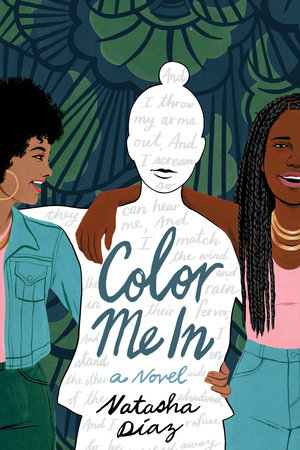

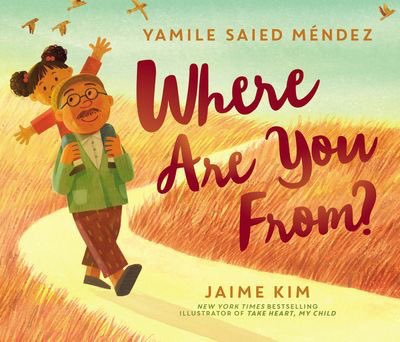
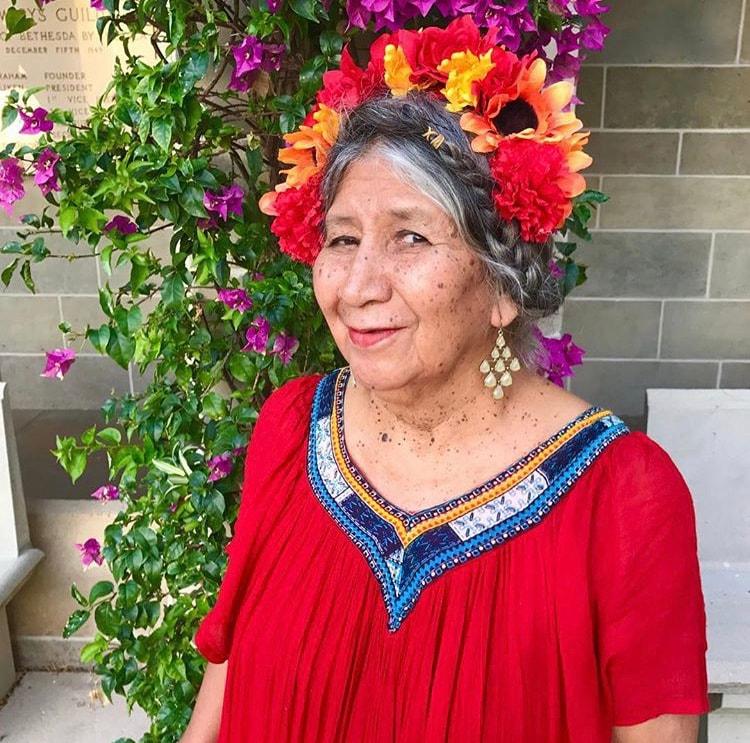
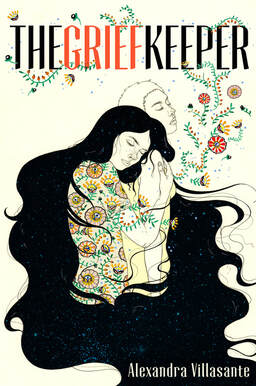
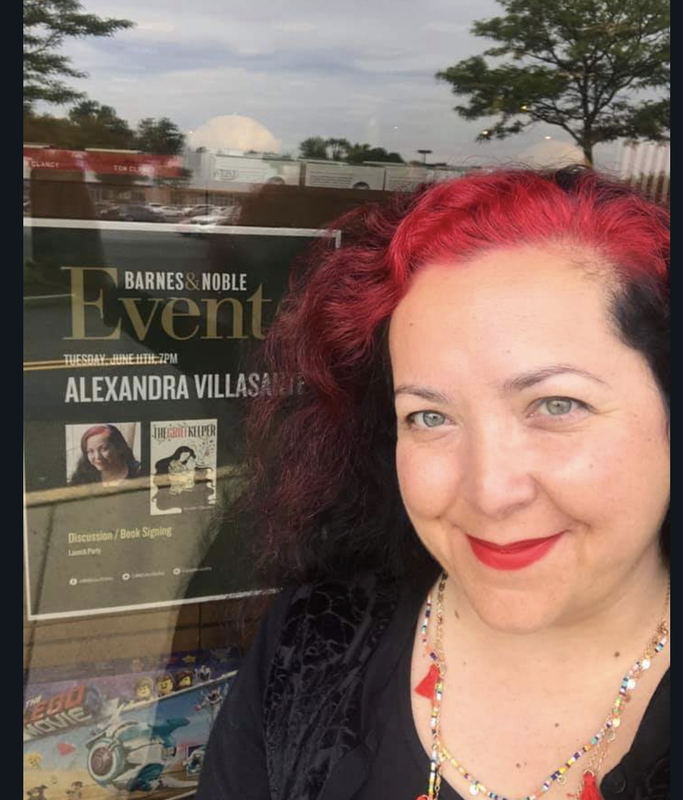
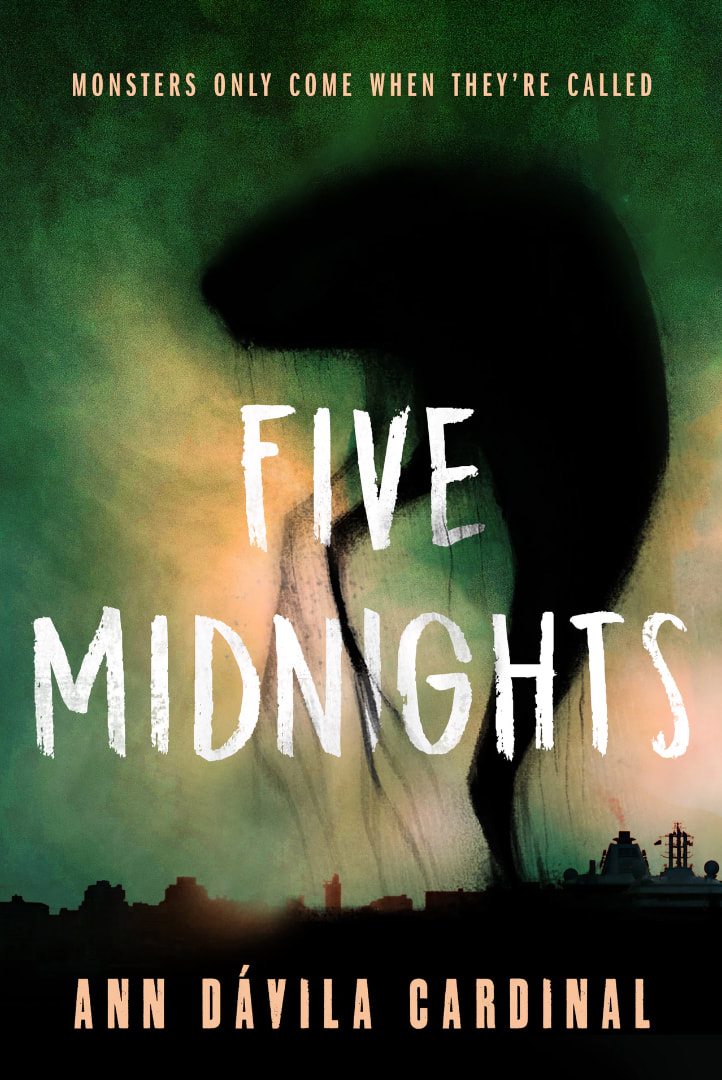
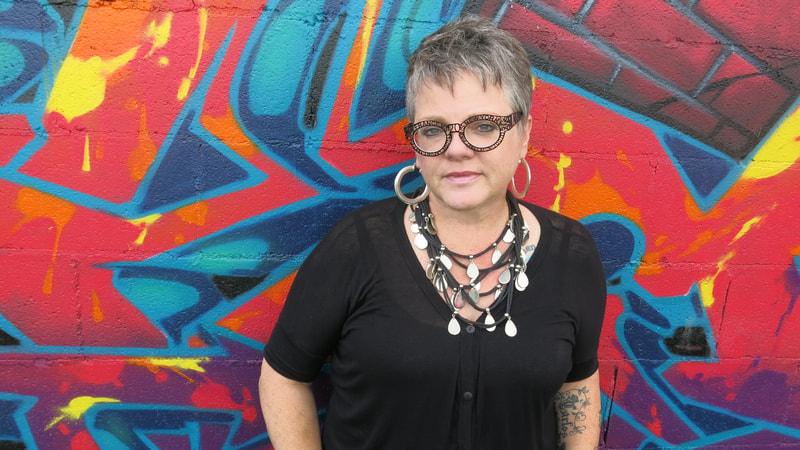
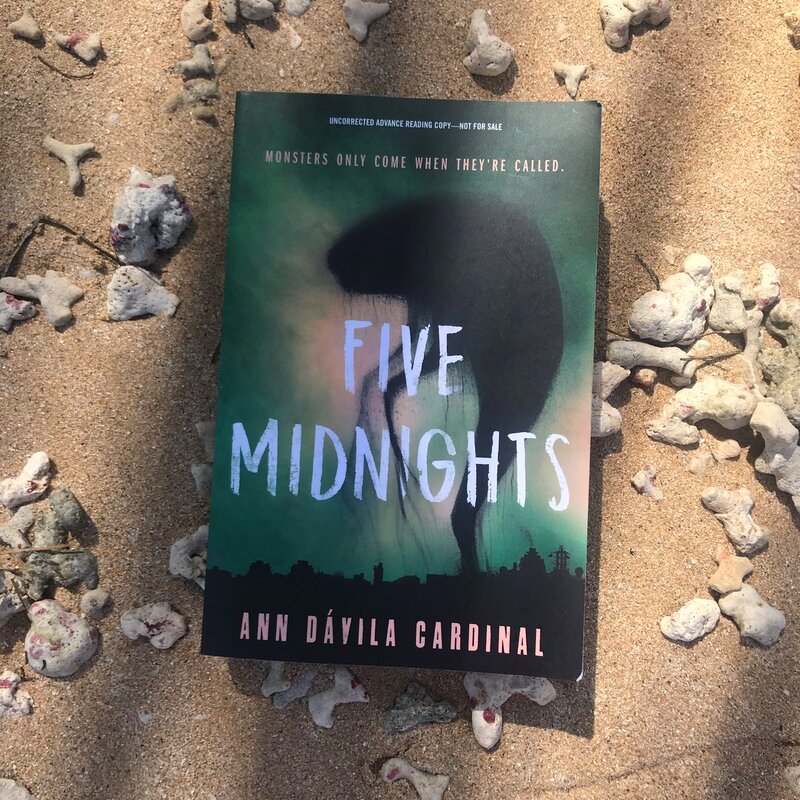
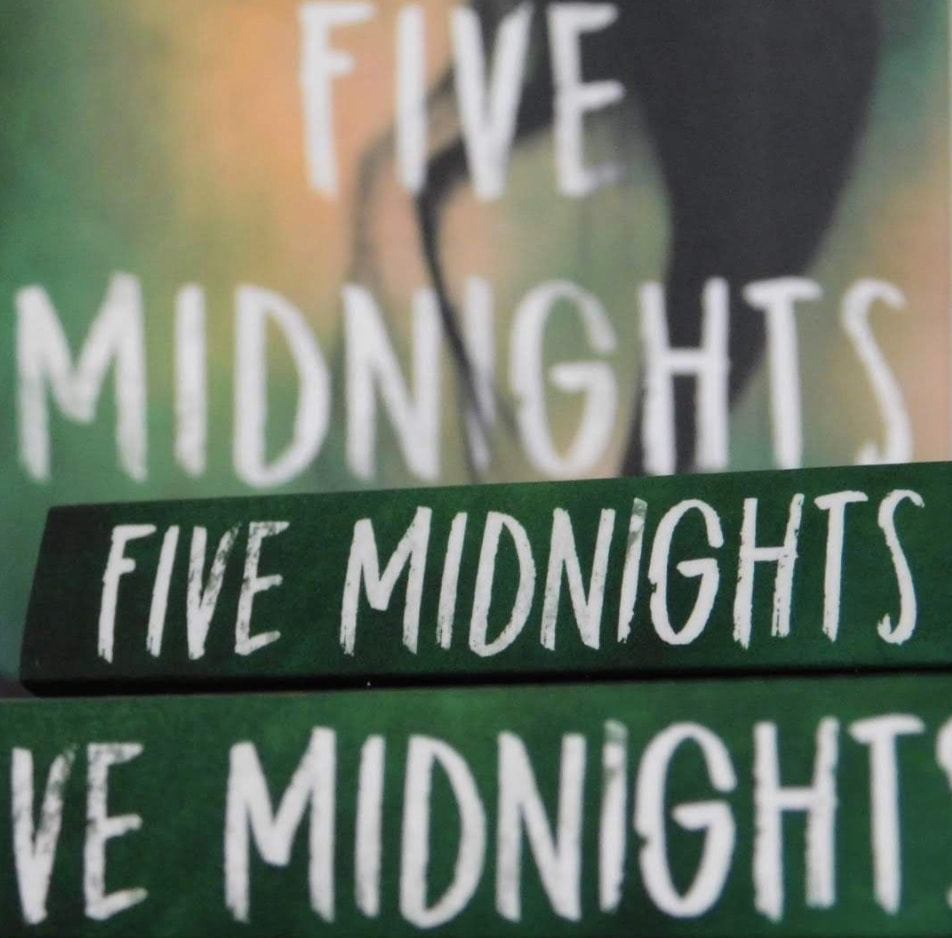
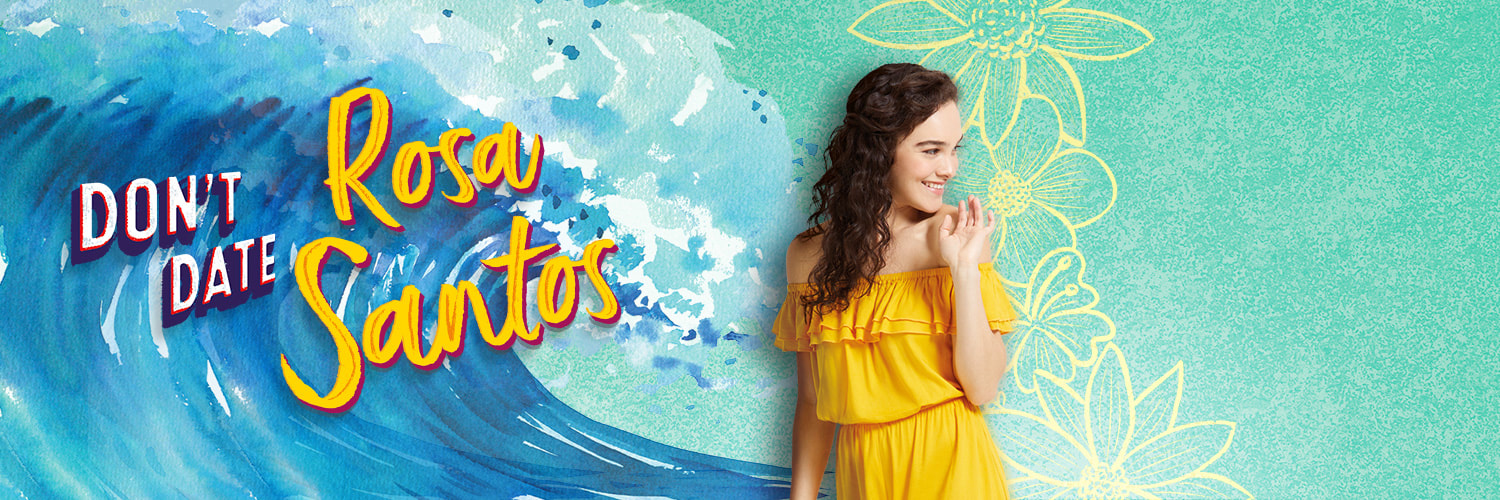
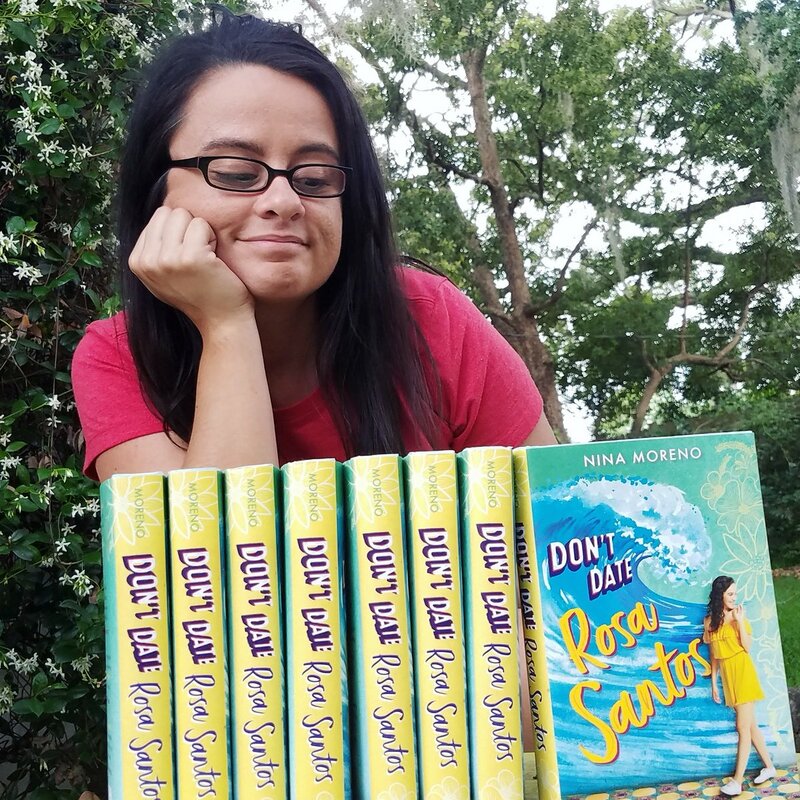
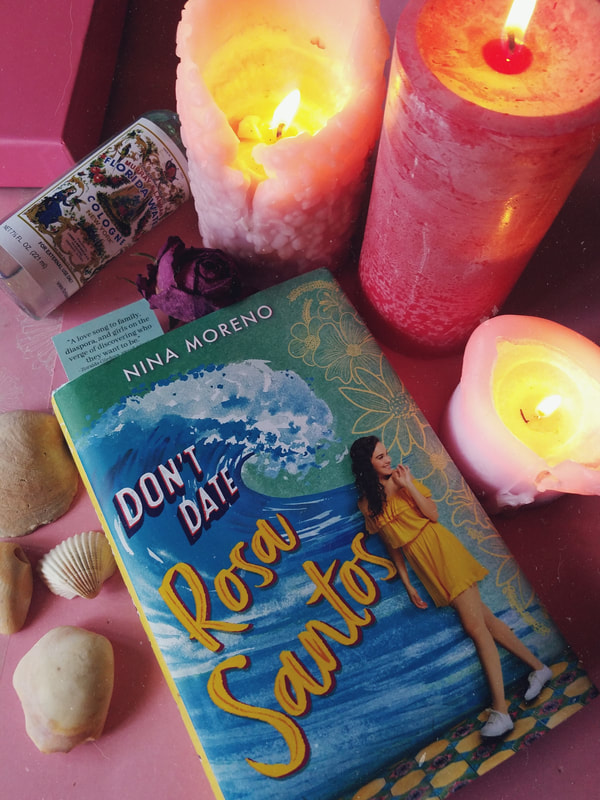
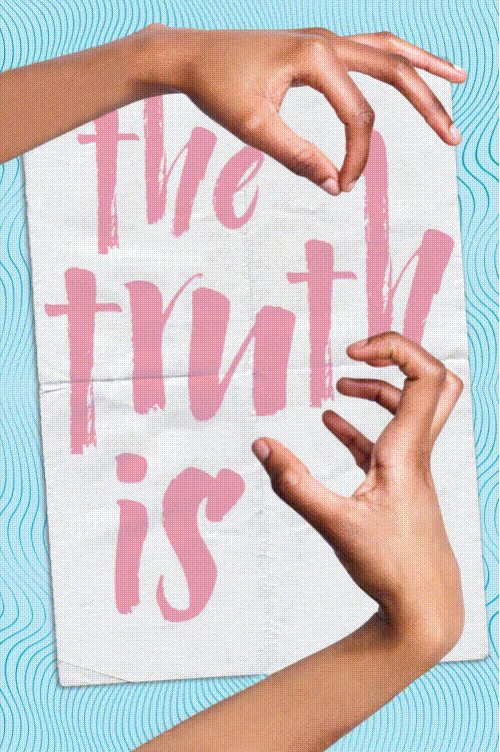
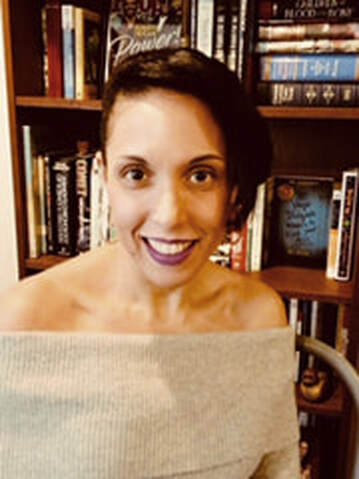
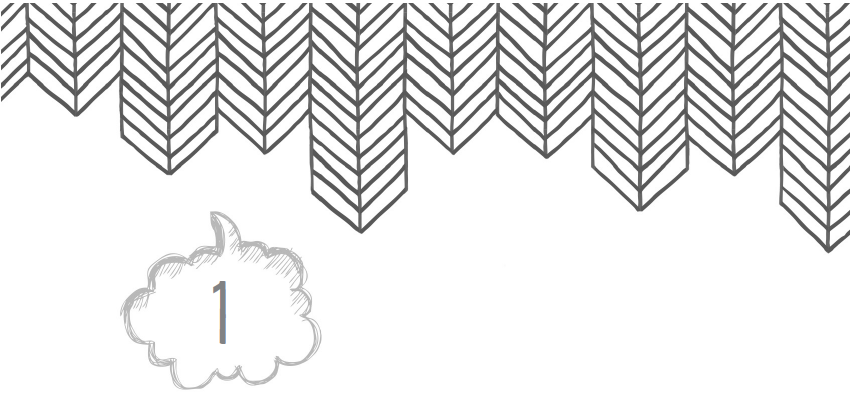
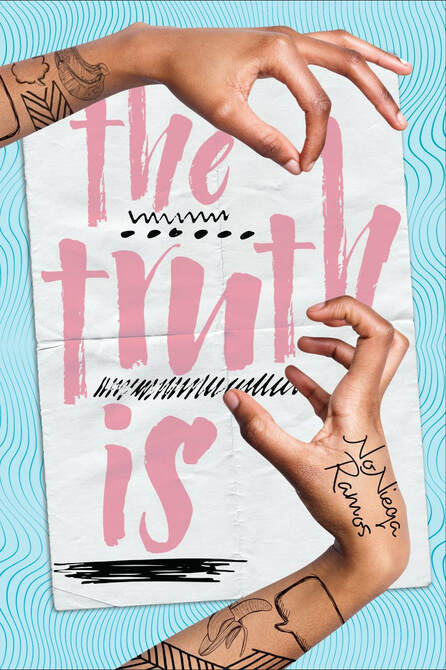
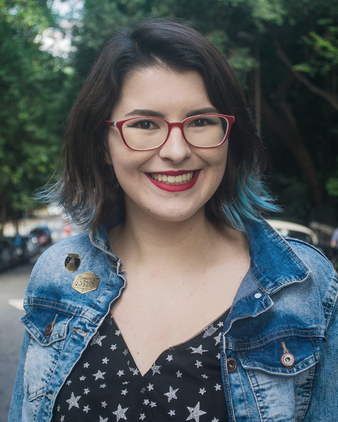
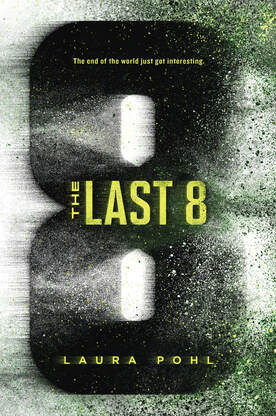
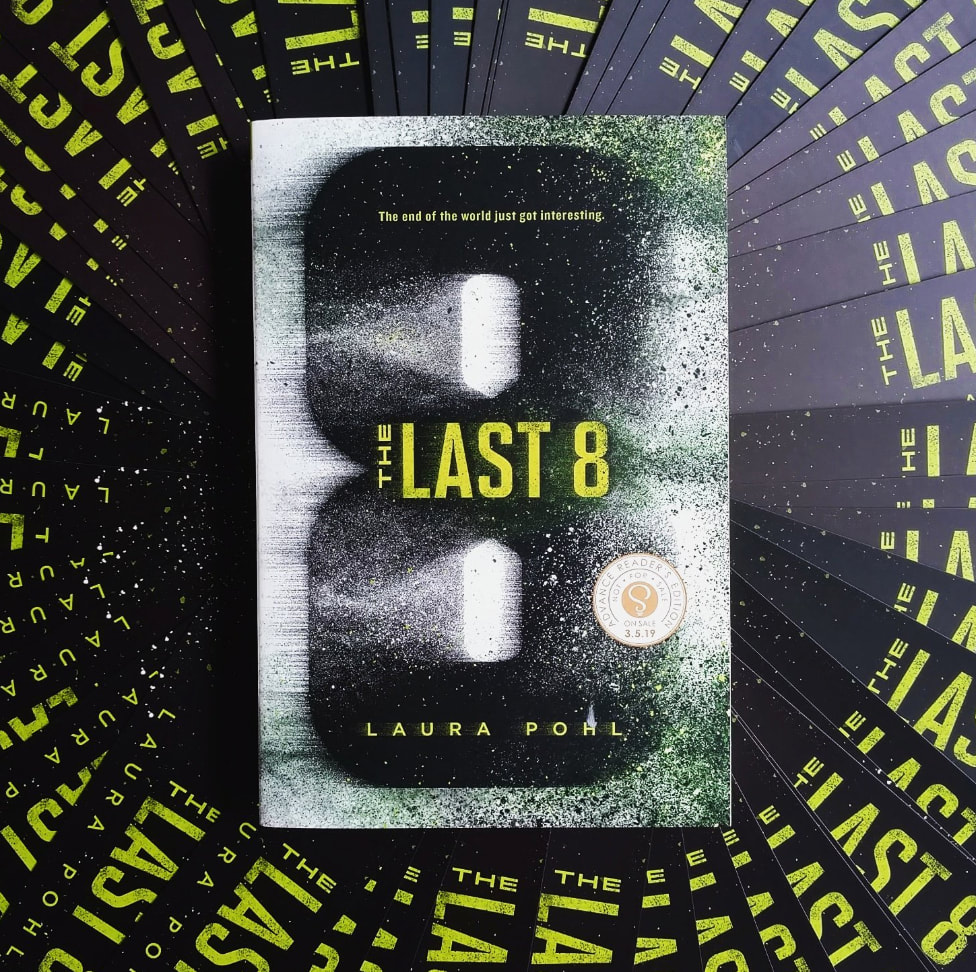
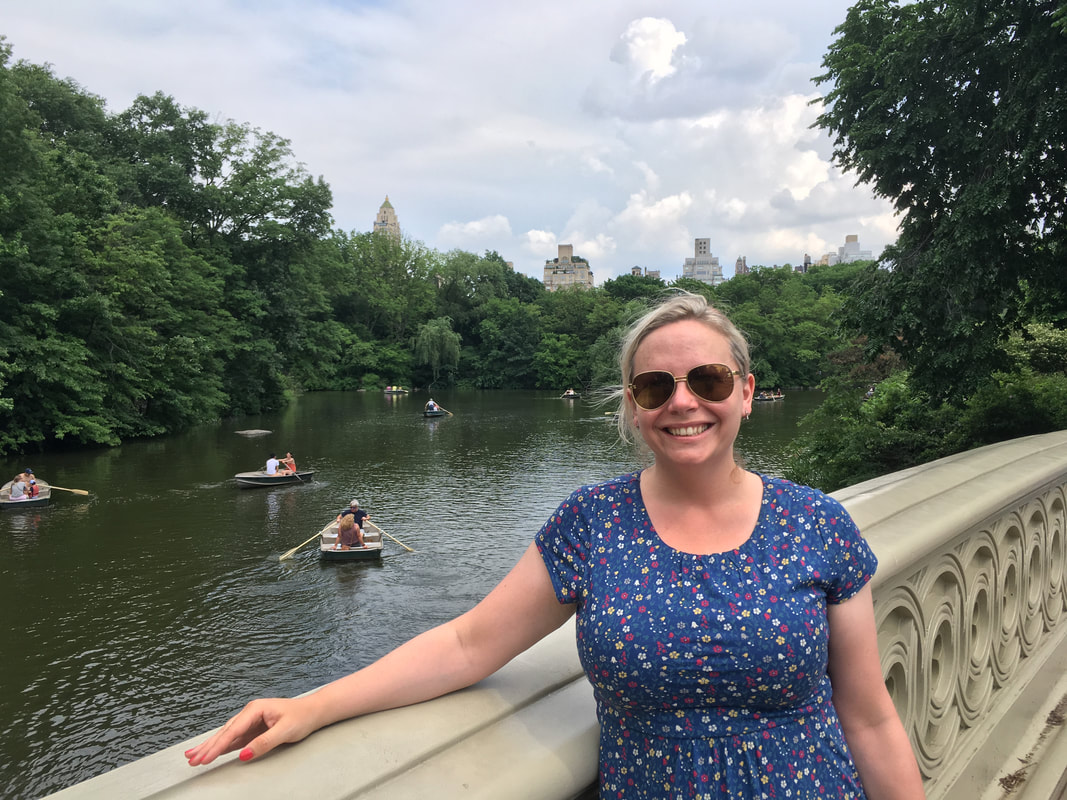
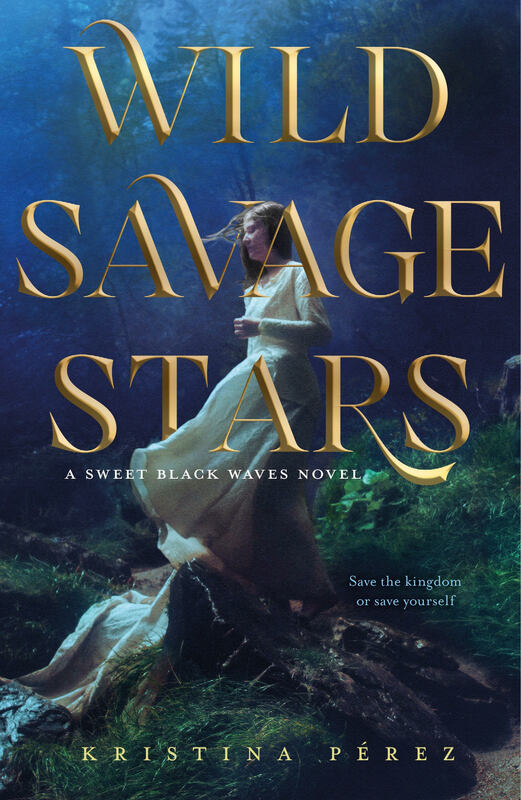

 RSS Feed
RSS Feed